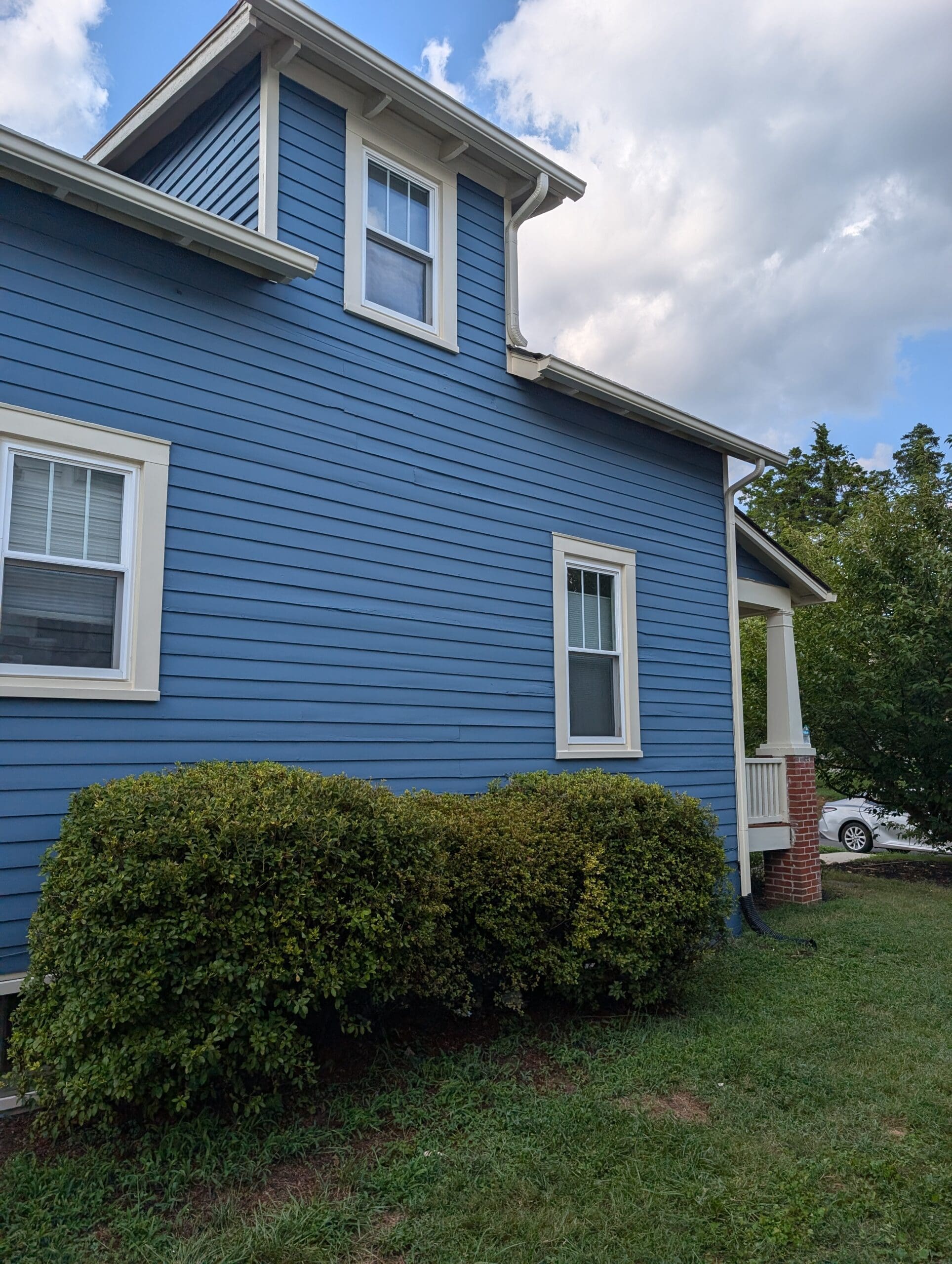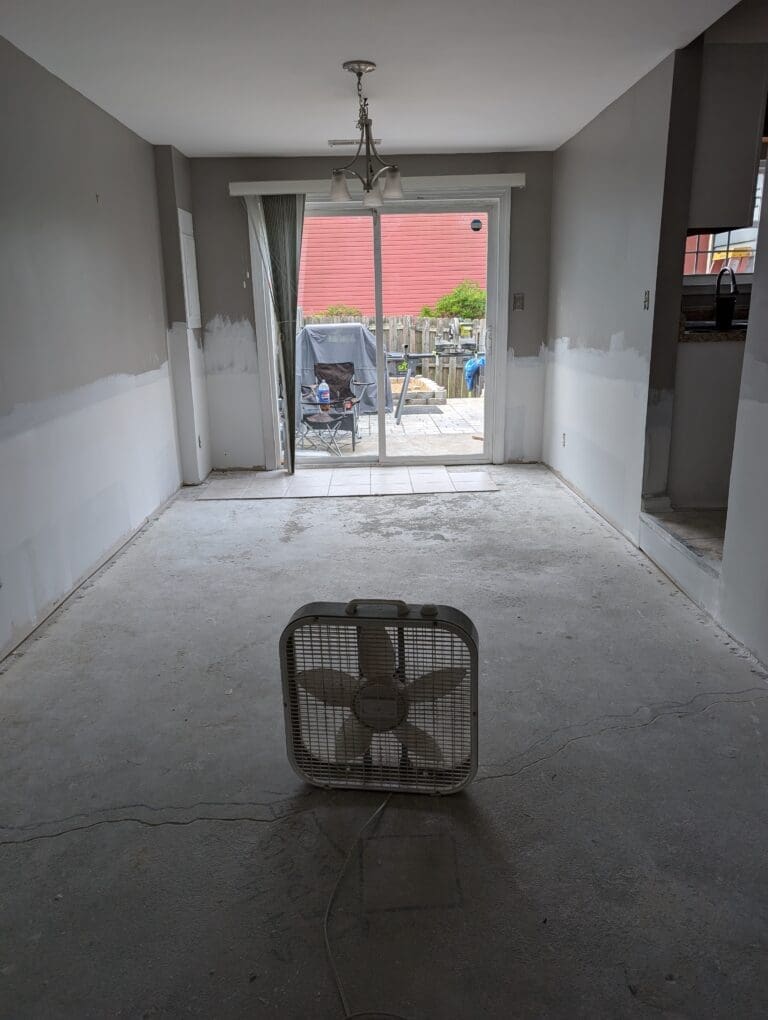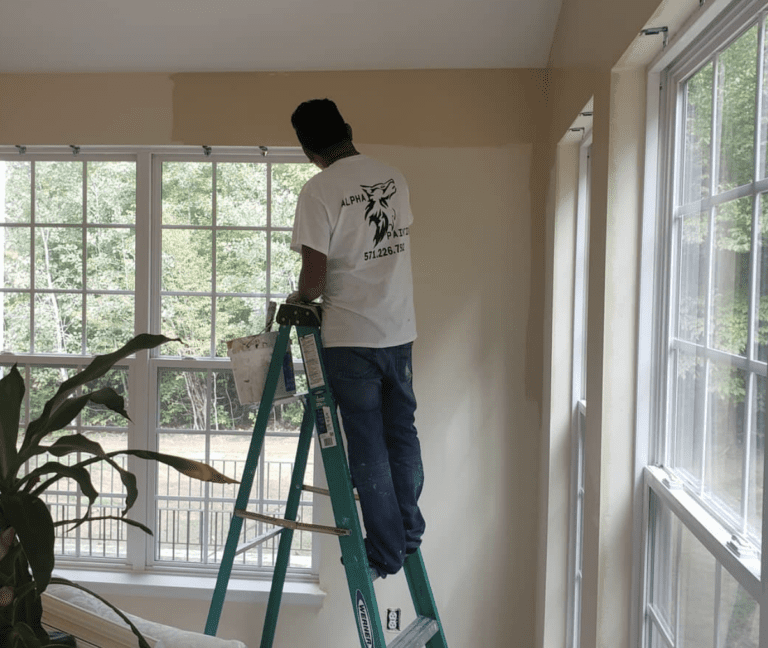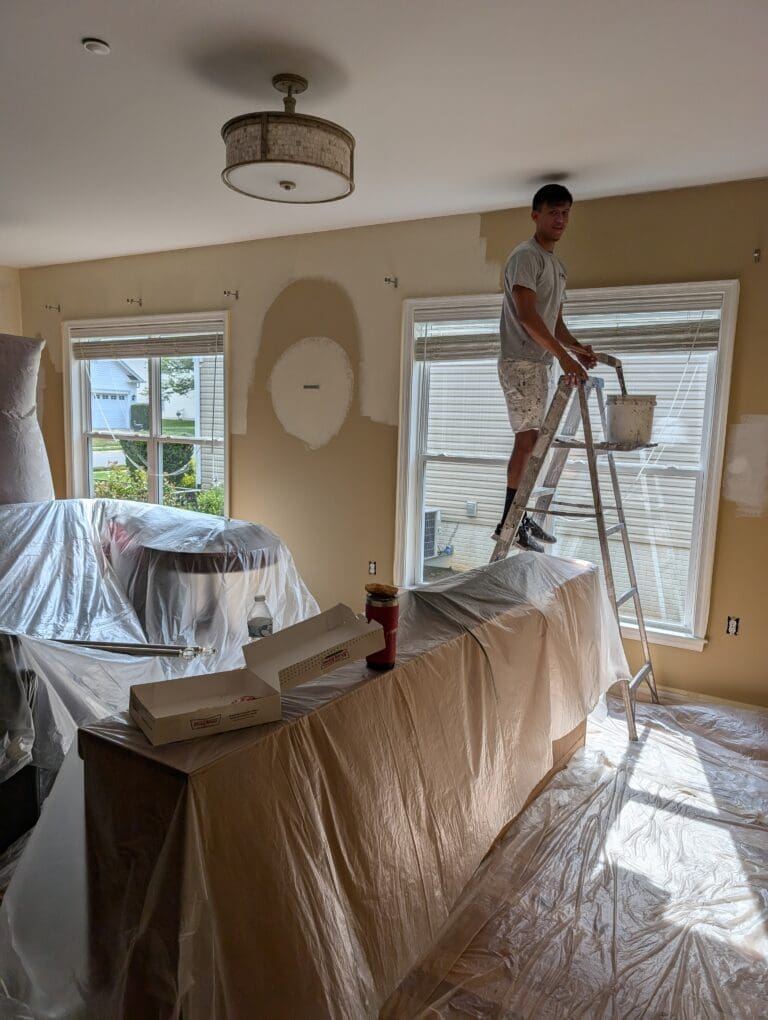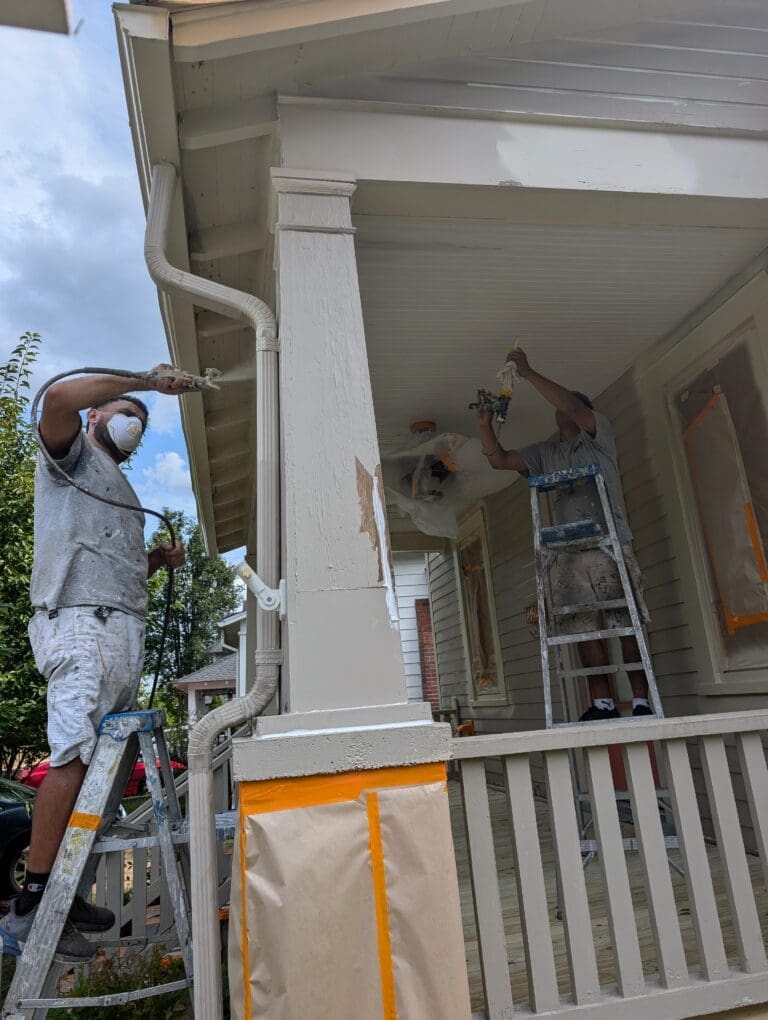How High Humidity Affects Your Painting Job and What You Can Do About It
Painting is more than choosing the right color or the best brand of paint. Environmental conditions play a huge role in the final outcome, and humidity is one of the biggest factors that can make or break a painting project. Whether you are tackling an interior refresh or a major exterior overhaul, understanding how humidity affects painting is crucial to achieving a flawless finish.
At Alpha Painting LLC, we know the challenges that Virginia’s humid climate can bring. Our team is trained to work around these conditions, ensuring a professional finish no matter the weather.
Table of Contents
Why Humidity Matters When Painting
Humidity refers to the amount of water vapor in the air. When levels are high, the air is saturated with moisture. Paints, whether latex or oil-based, rely on evaporation to dry properly. High humidity slows down the evaporation process significantly. Instead of drying quickly and smoothly, the paint can stay wet much longer than expected. This extended drying time can cause a range of problems that are not only cosmetic but can also compromise the durability of your work.
Even premium paints designed for quick drying struggle under excessively humid conditions. Surface bonding weakens, sheen levels become uneven, and the risk of mildew growth increases. Paint that dries too slowly can also trap dirt, dust, and insects, ruining what could have been a perfect finish.
Common Problems Caused by High Humidity During Painting
One of the first problems most people notice when painting in humid weather is poor adhesion. When the surface or the surrounding air holds too much moisture, the paint struggles to grip properly. This can result in peeling, flaking, or blistering shortly after the project is finished.
Color consistency becomes another concern. High humidity can cause some parts of the paint to dry faster than others, leading to patchy or streaky results. If a second coat is applied too soon, it can pull the semi-wet first coat right off the surface, causing more work and frustration.
Mildew is another hidden threat. Moist conditions create a breeding ground for mildew and mold, especially on exterior surfaces or areas with little sunlight. Once mildew takes hold under a layer of paint, it is almost impossible to remove without stripping the finish entirely.
Best Conditions for a Successful Paint Job
Professional painters always pay attention to both temperature and humidity. Ideally, humidity levels should be below 70% when painting. Levels around 40-50% are often considered optimal for the fastest and most even drying. Temperature should generally stay between 50 and 85 degrees Fahrenheit, depending on the paint being used.
Some paints come with manufacturer guidelines for ideal temperature and humidity ranges. Ignoring these recommendations can void warranties and lead to disappointing results. A professional approach involves monitoring weather forecasts, checking real-time humidity levels, and planning the work accordingly.
How to Manage Humidity for Interior Painting
Managing humidity indoors is a bit easier than outdoors. Running an air conditioner or dehumidifier can help bring moisture levels down to a workable range. It’s also important to ensure good air circulation by using fans to move the air and speed up the drying process.
Another key step is to avoid painting immediately after cleaning surfaces with water-based solutions. Allow ample time for walls and trim to fully dry before applying any paint. Moisture trapped inside materials will only cause adhesion problems later.
Choosing the right paint can make a big difference. Some brands offer paints specifically designed for high-moisture areas like bathrooms and kitchens. These products often include mildew-resistant agents and can tolerate slightly higher humidity without the issues typical paints might face.
How to Handle Humidity for Exterior Painting
Exterior painting presents a bigger challenge. You can’t control the weather, but you can plan carefully. Always check local forecasts and avoid days when humidity levels are high or when rain is expected within 24 hours.
Starting early in the day can also help. Humidity tends to rise as temperatures peak in the afternoon. By beginning work early, you can take advantage of lower morning humidity and give the paint more time to dry before conditions worsen.
Surface preparation is critical. Exterior surfaces should be thoroughly cleaned and allowed to dry completely before painting. Pressure washing is often necessary to remove mildew, dirt, and old, flaking paint. After washing, it is essential to wait at least 24 to 48 hours before painting, depending on humidity and temperature.
When possible, opt for paints labeled “quick-dry” or “all-weather.” These products are formulated to handle slightly more moisture and can provide a better safety margin in unpredictable conditions.

Signs That Humidity May Be Ruining Your Paint Job
If you notice that the paint stays tacky for an unusually long time, that’s a clear sign the humidity is too high. You might also see sagging or dripping paint, where gravity pulls on the slow-drying material, causing it to slide or run down vertical surfaces.
Blistering can occur when moisture gets trapped underneath a partially dried layer, forcing the paint to bubble outward. Mold or mildew appearing soon after painting is another strong indicator that moisture levels were not properly managed during the application process.
Addressing these issues early can sometimes save the project. However, if left too long, major surface preparation and repainting might be necessary.
When to Call in the Professionals
Humidity-related paint failures can be expensive and time-consuming to fix. When the forecast calls for humid conditions and you have a critical project at hand, bringing in a professional team is often the best move.
Experienced painters have the tools and techniques to minimize humidity problems. From moisture meters to specialized paints and sealers, they know how to adapt to less-than-ideal conditions. Hiring a team like Alpha Painting LLC can help ensure your home or business looks beautiful and stands up to the elements long after the last brushstroke.
Final Thoughts
Humidity has a serious impact on the success of any painting project. Understanding how moisture in the air affects paint adhesion, drying times, and finish quality is crucial. With careful planning, proper environmental control, and the right materials, it is possible to achieve excellent results even when humidity levels are less than ideal.
Knowing when to adjust your schedule or bring in professional help can make all the difference between a paint job that lasts for years and one that fails within months. Take the time to respect what the weather is telling you, and your project will reward you with a long-lasting, beautiful finish.

